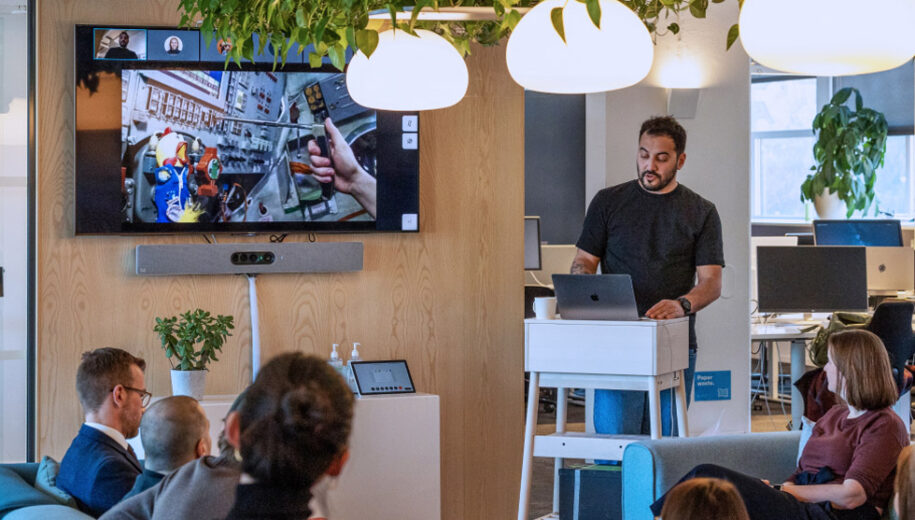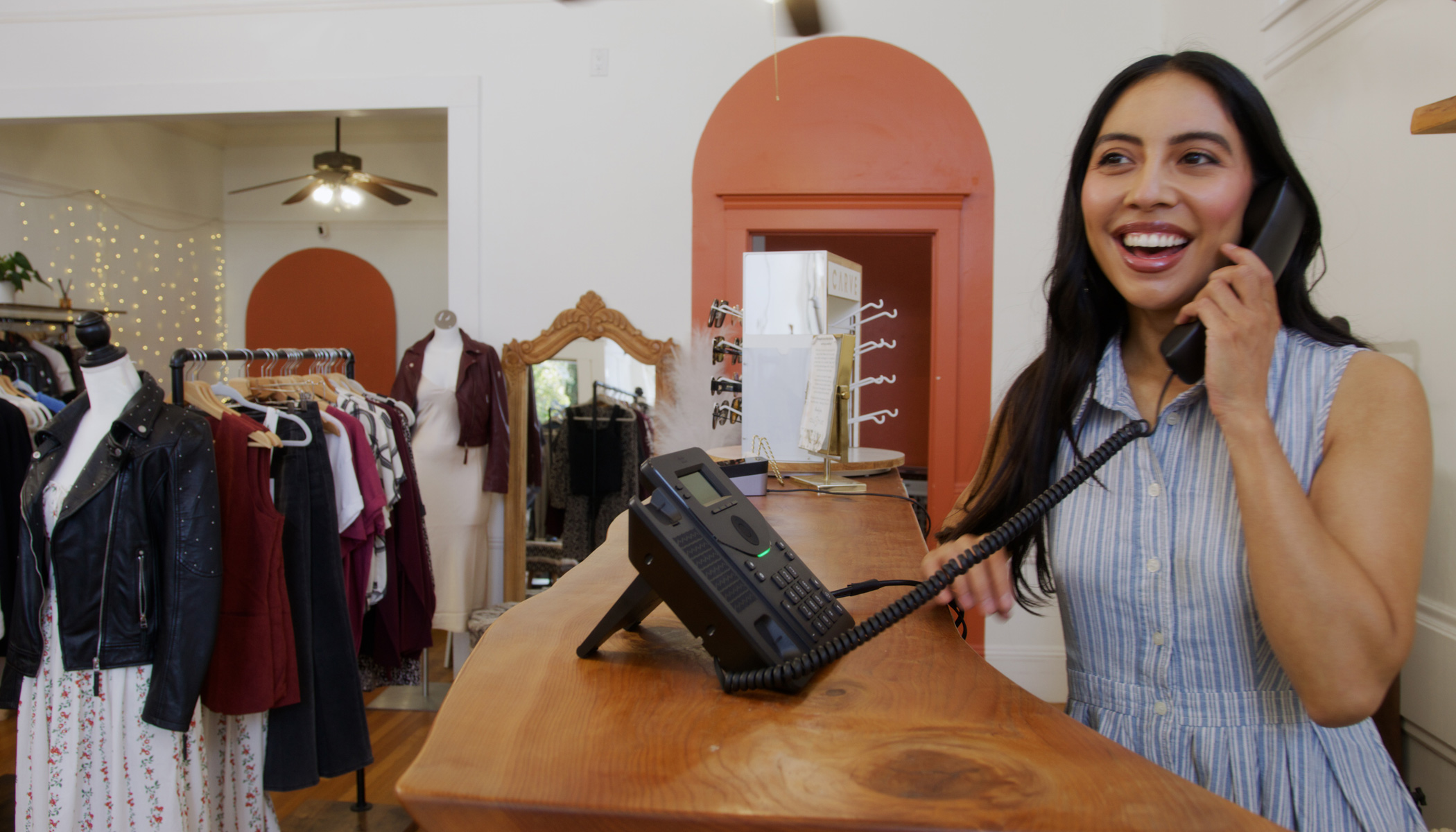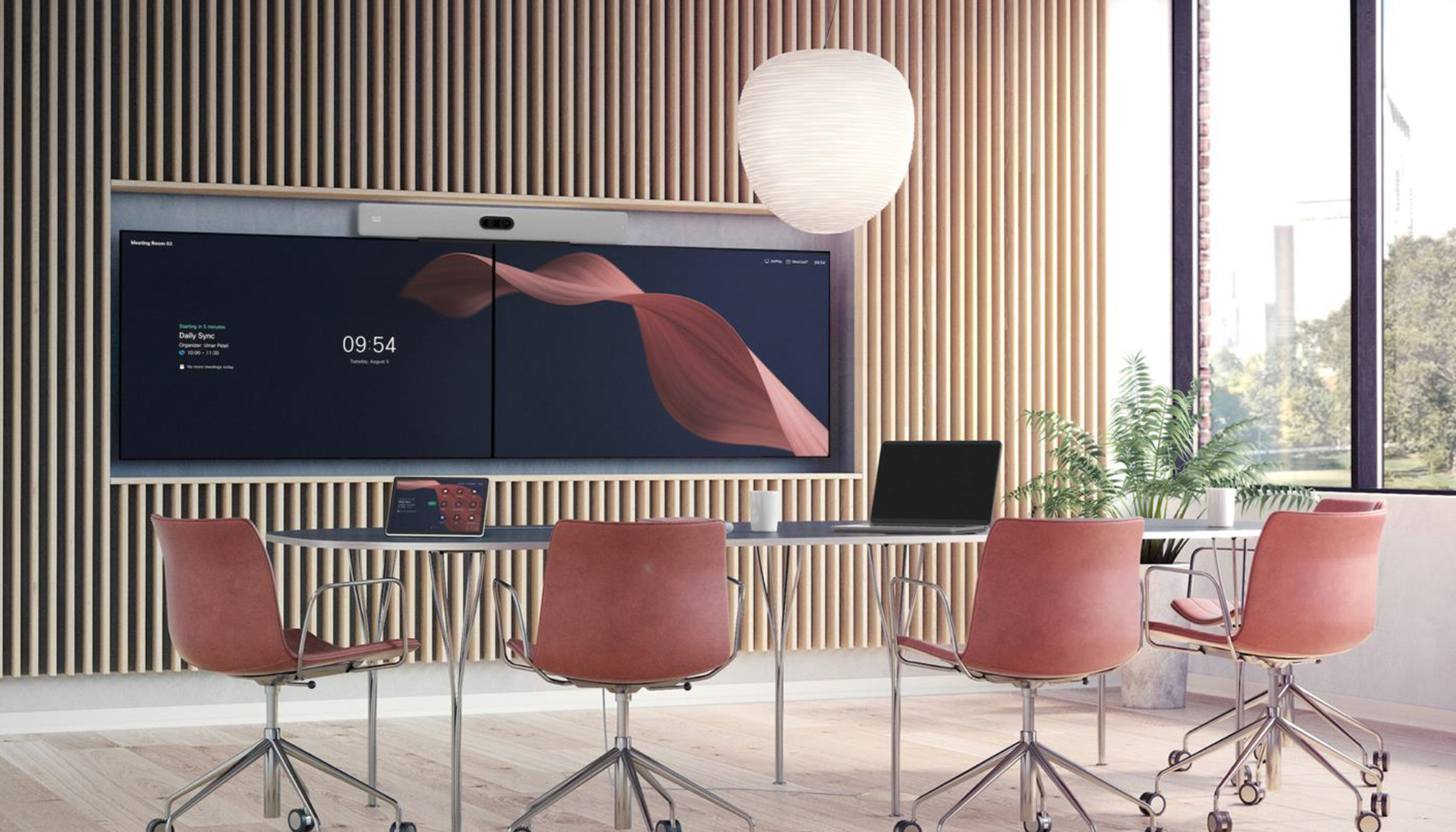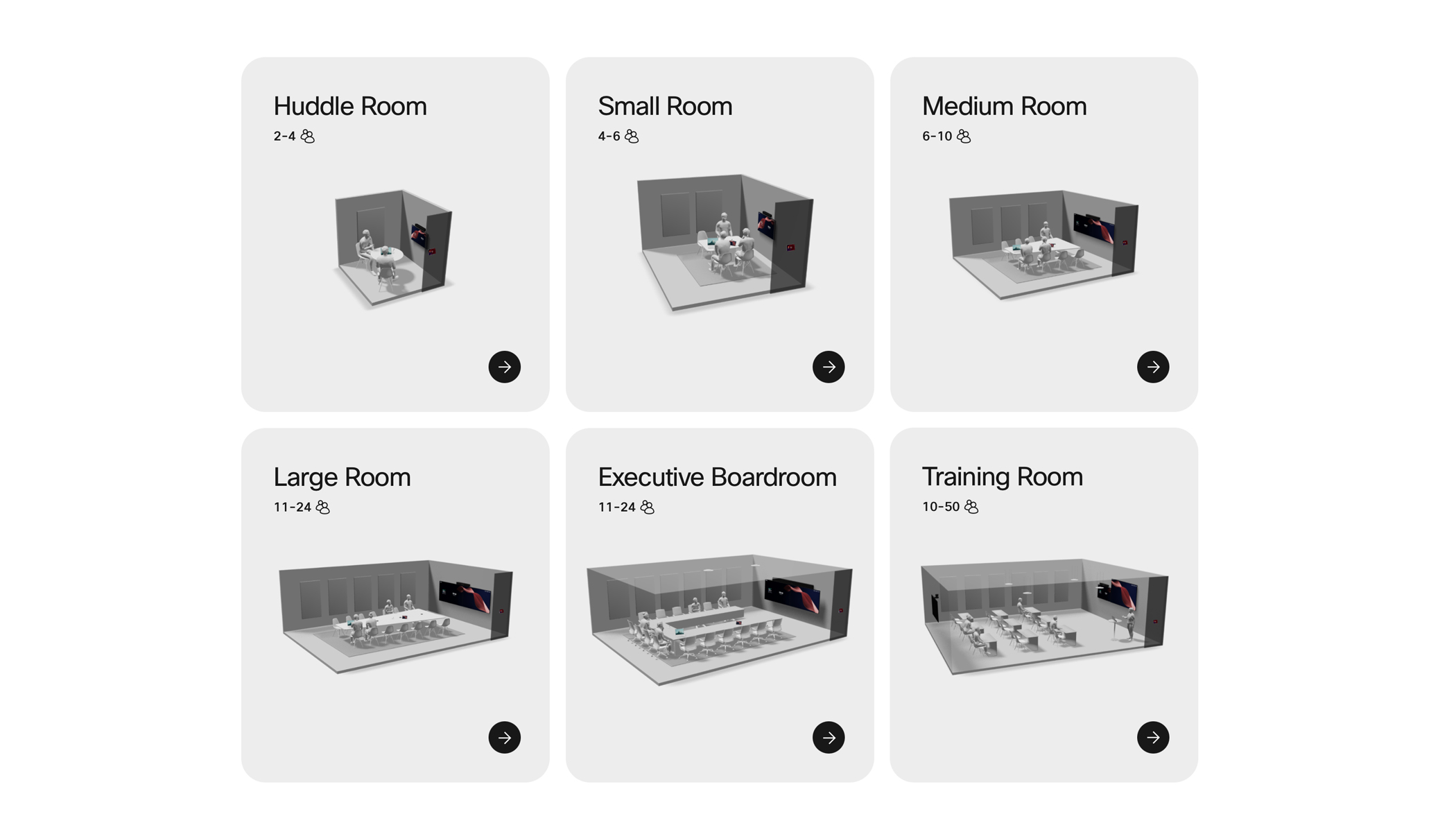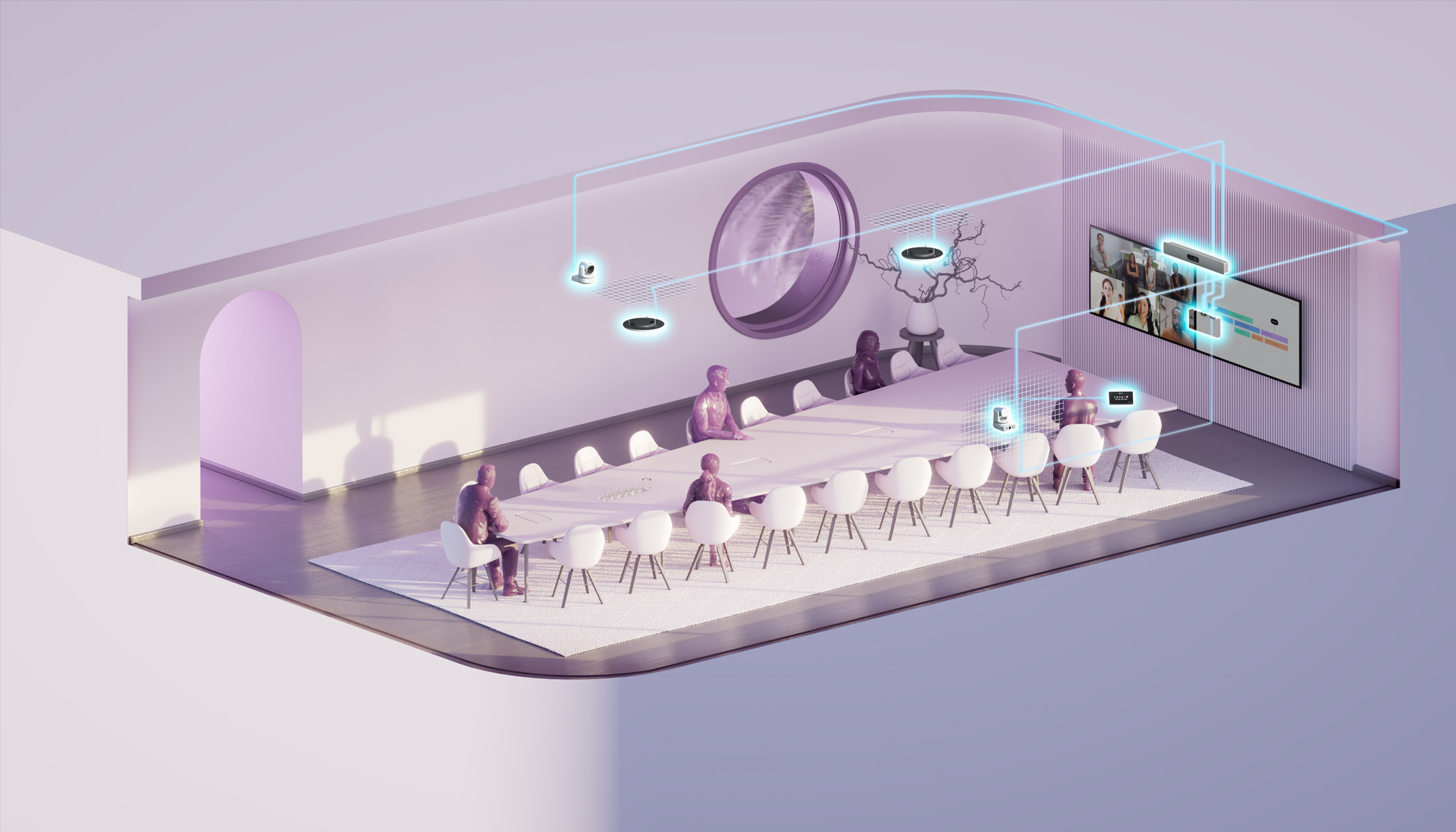Designing a tram that will run in Oslo for the next 30 years. Fighting a diabetes epidemic in the UK. Partnering with Google to improve educational outcomes in the U.S. Helping secure elections with Smartmatic.
These are just a few of the diverse projects that global design firm Designit brings their creativity to every day. And unifying all their efforts is their belief in holistic, human-centered design.
“We’re an international design agency, born and bred on the Scandinavian design heritage, so it’s always been very much about the human-centered approach,” said Niklas Mortensen, managing director of Designit’s Oslo studio.
The Designit team knows that design has the power to transform the way people live, work, and play. And they’re taking human-centered design a step further, leaning into what they sometimes call “humanity-centered” design: a focus on solutions that contribute to long-term progress and benefit everyone, rather than quick solutions that only benefit some.
They’ve applied this same thoughtfulness and creativity to the design of their own studio space—including their use of collaboration devices.
We sat down with Mortensen to discuss Designit’s approach to hybrid work and the role Cisco collaboration devices play. The team has embraced a few core principles that guide their efforts:
- Thinking beyond meetings
- Evolving to meet changing needs
- Focusing on flexibility and interoperability
- Prioritizing well-being
- Democratizing design
- Ensuring inclusivity
Read on for a deep dive into these principles and insights into how your company can build hybrid workspaces with employee well-being and creative collaboration in mind.
Think beyond meetings
Too often, collaboration can become synonymous with meetings—especially in our world of hybrid work where video meetings abound.
We can get laser-focused on creating meeting spaces, choosing the best virtual meeting software, and making sure we have the right video conferencing equipment, and the coolest conference room chairs (or virtual backgrounds).
Don’t get us wrong, ensuring you have the tools you need for productive meetings—whether they’re in-person, virtual, or hybrid—is important.
However, collaboration is so much more than that weekly 2pm project update call. It’s vital that we design all facets of our virtual and in-person workspaces to facilitate collaboration, not just stopping at cameras for our conference rooms.
How are you empowering asynchronous communication, idea sharing, co-creation, spontaneous brainstorming sessions, and more?
Whether it’s an all-in-one collaboration device at a team member’s desk or a large collaboration board for digital whiteboarding, the Designit team uses a diverse range of Cisco devices.
While they previously leveraged these devices primarily for video conferencing, Mortensen said the devices are now central to their hybrid team’s collaboration, both in-person in their studio and with colleagues or clients who may be working remotely.
“Cisco devices have now become so integral in terms of how we work, not only with each other but also with our clients and how we share inspiration across the studios.”
In their Oslo studio of about 60 people, they have several Cisco Room Kits, including integrated video bars and modular video collaboration kits that can be paired with flat panel displays.
“The Room Kits are super flexible for us,” Mortensen said. “We use them in everything from the group and all-hands spaces to smaller meeting rooms.”
They also have Cisco Desk Pros, all-in-one collaboration devices for individual use at a dedicated desk, and a Cisco Board for digital whiteboarding, video-first team collaboration, and ideation.
They use these devices for everything from video conferencing and presentations to co-creation and real-time collaboration.
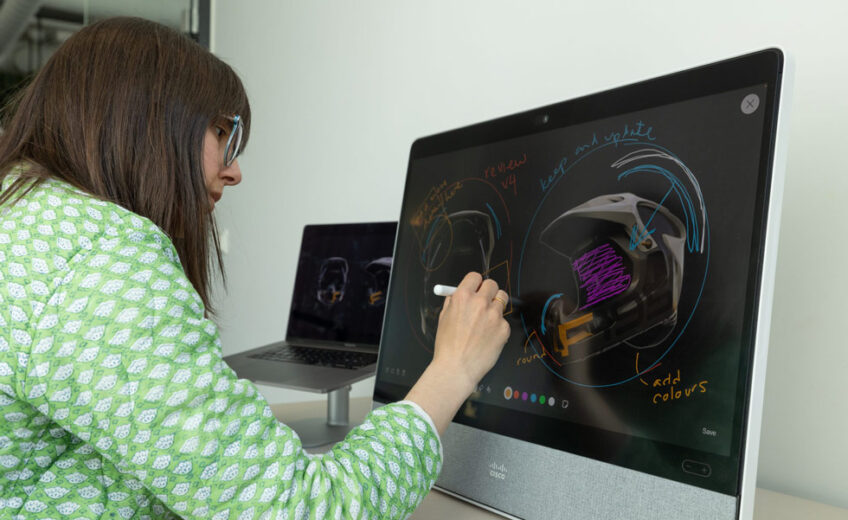
Evolve to meet changing needs—in the way that’s right for you
As Designit’s hybrid work journey progresses, they continue to evolve their workspaces to meet changing needs in the way that’s best for their team.
Designit has 15 studios around the world from Oslo to Tokyo to Tel Aviv.
Since their shift to virtual and then hybrid work, collaboration between offices has only increased.
“Collaboration across studios has become much more of a thing. It was not that we didn’t do it before, but now, borders don’t really matter anymore, because we can all collaborate and work remotely and clients also see this,” Mortensen said. “Where they before maybe required designers to be on site with their teams there, now they’re like, ‘well, actually we just want the best people and as long as there is not a huge time zone difference, it doesn’t really matter where people are sitting.’”
As a result, access to quality collaboration devices is more critical than ever before.
Designit plans to expand the number of devices they’re using, aiming to have devices in as many spaces as possible—both in studios and home offices.
The goal? “It’s being able to facilitate hybrid working and co-creation in the best possible way when people are not physically together,” Mortensen said.
The devices are interwoven into every phase of their creative process.
During the initial insight-gathering stage, they’ll often set up video interviews with various stakeholders.
Then they sketch out their initial concept, prototype, and test, leveraging Cisco devices throughout, including for brainstorming and digital whiteboarding using Cisco Boards with Miro—and looping in remote experts for real-time consultations.
Focus on flexibility and interoperability
When building your hybrid workspaces, look for devices that integrate well with the other tools you and your clients use. The collaboration experience should be smooth, and free of unnecessary roadblocks due to tech that doesn’t play well together.
The Designit team appreciates that Cisco devices are compatible with other tools they’ve come to love, including Miro, which offers versatile online whiteboards. When it’s time for a design meeting or an impromptu brainstorming session, they can launch Miro on any of the Cisco devices to sketch out a concept, build a mind map, take notes, and more. If using the Cisco Board, the designers can use either a stylus or the Board’s touch screen features to easily get their ideas down and everyone can see what’s on the LED screen, whether they’re in the office or video conferencing in.
“We’ve gotten a black belt in Miro, especially over the last couple of years,” Mortensen said. “The combination of Cisco devices and Miro has been key for us. We were thrown into it because of the pandemic, but we will continue using it because it’s so powerful and efficient when it comes to collaborating.”
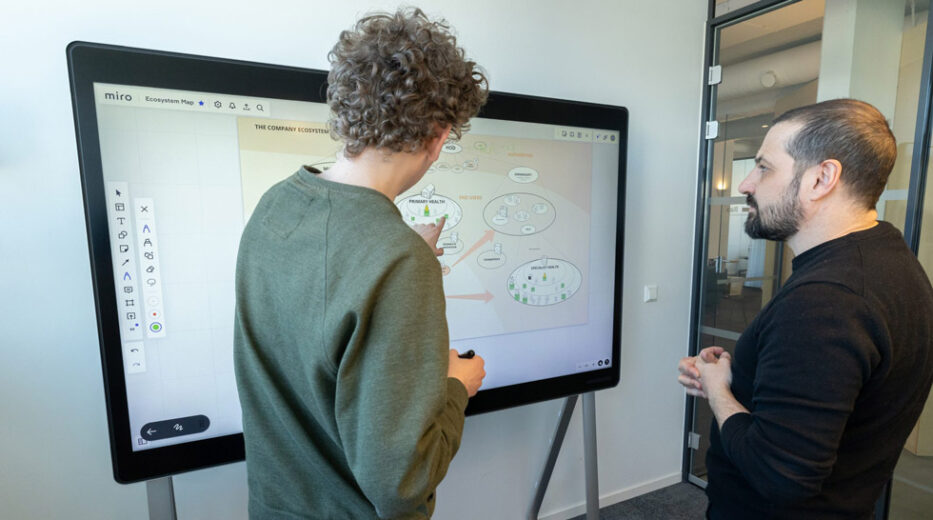
While he enjoys using Cisco devices with the Webex App, Mortensen also highlighted that the devices work well with whatever collaboration software their clients or colleagues in other offices prefer to use. This interoperability is essential for a dynamic firm like Designit.
“Our clients work with every possible platform so we also have to work with every possible platform as well,” Mortensen said, “We’ve used Cisco devices with Zoom, Google Meet, Microsoft Teams, and Webex. Throughout the day, we need to switch platforms, depending on what the clients use.”
Prioritize well-being
In keeping with human-centered design, your workspace design and collaboration device choices should also be made with employee well-being at the forefront.
Listen
When beginning a project for their clients, the Designit team spends time talking with all possible stakeholders and understanding their needs so they can create a solution that works well for everyone.
Similarly, as you work to identify which collaboration devices are best for your hybrid workspace, Mortensen suggests taking inventory of your team’s needs and exploring how any potential devices will be used to meet those needs.
At Designit, leadership continues to ask for feedback periodically to discover how the team is doing and explore any changes required to improve well-being.
In a recent employee well-being survey Designit conducted, the team expressed a wish for even more devices.
“There’s a resounding demand for Cisco devices in as many spaces as possible,” Mortensen said.
Designit’s findings echo other recent research findings: In a global study, over 50% of respondents said access to all-in-one collaboration devices would improve their work-from-home experience when collaborating with others.
Don’t compromise on the basics
When it comes to employee well-being, it’s also important to pick devices that get the basics right.
For Designit, this means choosing devices that provide high-quality video and audio to help lessen video fatigue.
“The cognitive load of bad quality audio and video when you’re in these meetings, it’s just unbearable,” Mortensen said. “After a full day of meetings and workshops on bad quality video and audio, people get really, really tired and grumpy. For employee well-being, it’s super important that these things work seamlessly and are high quality.”
And Cisco devices have delivered.
“The quality of Cisco devices is so incredibly good,” Mortensen said. “For us, as a studio, I keep coming back to the high-quality video and audio.”
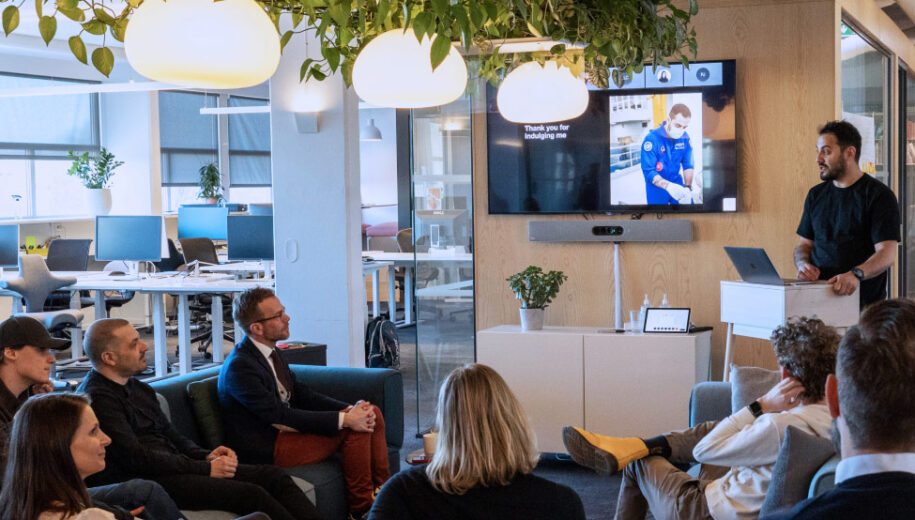
Details matter
In addition to selecting devices with a strong foundation in the basic capabilities you need, look for ones with other helpful features that make life a bit easier for your team.
Mortensen highlighted the touchless controls and voice commands Cisco devices offer.
“I love the use of the speech recognition to initiate the meetings,” Mortensen said. “It’s lightning fast and that’s one of those delightful things where it’s so fast compared to any other virtual assistant. It just instantly works.”
Democratize design
Along with seeking employee feedback in terms of well-being, it’s also good to open the door for team members to further participate in the workspace design process or share suggestions for how they think the space could evolve.
At Designit, team members are always thinking of creative new ways to leverage the Cisco devices for even more interactive collaboration and co-creation.
“People come with suggestions like, ‘Okay, but we can have one here, and then if we have an auditorium set up here, and then we can have a Precision 60 speaker tracking camera over here, and then we can collaborate and it makes it much more interactive,’” Mortensen said. “People start to get really engaged because these devices have become so integral in terms of how we work.”
Ensure inclusivity
When designing your hybrid workspaces, it’s also important to make sure employees have what they need to make their home offices as productive as possible when working remotely. The collaboration experience should be consistent, regardless of where people are working and everyone should feel equally included.
In addition to expanding the number of devices in their studios, Designit is also looking into giving some employees collaboration devices to use in their home offices when they’re working remotely.
Mortensen is especially eager to provide his broader team with personal collaboration devices after he experienced their power firsthand while working fully remotely during the pandemic.
“It was quite interesting. A few of us that did have Cisco devices at home were much less tired,” Mortensen said.
And in the office, Mortensen’s current device of choice is the Cisco Desk Pro. “I love it. I use that as my second screen and as a collaboration device throughout the day.”
Hybrid work that works for you
The Designit team has created an environment where creativity can flow and everyone can thrive, no matter where they’re working. They’ve rejected the one-size-fits-all model and are doing hybrid work in the way that works best for them.
Whether your team is just getting started on your hybrid work journey or is looking to hone your space for better collaboration and employee well-being, explore the additional resources below or get in touch with us.
